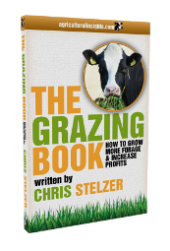
 2
2




Agricultural Insights Daily Podcast/Blog about Sustainable Agriculture with a focus on livestock and grazing.
The Grazing Book




Idle dreamer
 1
1




 1
1




Chris Stelzer wrote:I'm a ranching intern. I've interned with Greg Judy, the James Ranch and I'll soon be leaving to work with Ian Mitchell-Innes in South Africa on his ranch. I've been trying to relate to permies, and let you all know that ranching has a lot in common with Permaculture. At least ranching that is more focused on Holistic Management/high density and mob grazing. Traditional ranchers are ruining their ecosystems in many cases. Let's move on.
I think I have found a really good example that everyone, both permies and ranchers, can understand. I've recently been reading "The One Straw Revolution" by Fukuoka. In the first few chapters he talks about how he uses straw to mulch the ground in his fields. He says that this is very important for the health and fertility of his land. We all know this. HOWEVER, the thing that gets me excited is the fact that ranchers (not many) are trying to replicate this exact same strategy on our grasslands. The way we go about it is different, we graze our livestock (mostly cattle) at high densities. High density grazing "wastes" a lot of grass. The grass is trampled onto the soil surface by the cattle and you basically get the same effect as fukuoka does in his fields. We call this trampled grass "litter." Even though he is growing grains and we are raising livestock, the principles are the same. I just thought I would share my latest "light bulb" moment with you all.
Lawrence London lfljvenaura@gmail.com
Venaura Farm http://venaurafarm.blogspot.com
Avant Geared http://www.avantgeared.com
Permaculture Mailing List http://lists.ibiblio.org/mailman/listinfo/permaculture
 1
1




Wyomiles Hogan wrote:Hi Chris, So explain to me exactly how high density grazing works. Are the animals fenced or herded? How does this system relate to wild herds of say buffalo. It seems that wild herds, that evolved in any given habitat, would have something to teach us.












Greta Fields wrote:Cros. speaking of trampling, I discovered by accident that native grasses may have been planted by the trampling feet of bison. An old man suggested I try bush-hogging in winter. He would not say why, but I tried it. Next August, native Indian grasses came up and made beautiful "feathers" sticking out of the oldenrod-iron weed field. I didn't even know I HAD Indian grass, and I had never seen it before.
Somebody suggested that the tractor tires mimic the feet of bison, pressing the fluffy Indian grass seeds onto the mud.
It shocked me.
Deer , sure enough, had their fawns down in this heavy grass cover, and that made me understand why huinters keep pushing for native grass to be planted.
My understanding is, cattle hooves and bison hooves work differently upon the sods. For the life of me, I can't understand why the ranchers don't raise bison instead of cattle though. It seems like bison are made for America, but not sure about cattle.
 1
1




Greta Fields wrote:Somebody suggested that the tractor tires mimic the feet of bison, pressing the fluffy Indian grass seeds onto the mud.
It shocked me.
Deer , sure enough, had their fawns down in this heavy grass cover, and that made me understand why huinters keep pushing for native grass to be planted.
My understanding is, cattle hooves and bison hooves work differently upon the sods. For the life of me, I can't understand why the ranchers don't raise bison instead of cattle though. It seems like bison are made for America, but not sure about cattle.

|
Don't sweat petty things, or pet sweaty things. But cuddle this tiny ad:
The new kickstarter is now live!
https://www.kickstarter.com/projects/paulwheaton/garden-cards
|




